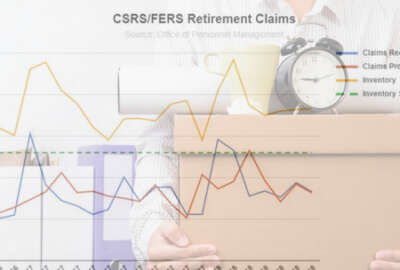

If you are planning to retire soon, when should you do it? Federal benefits expert Tammy Flanagan joined host Mike Causey on this week's Your Turn to talk about the...
Federal employees looking to retire are frequently eager to choose the most strategic date to do so. But Tammy Flanagan, senior benefits director for the National Institute of Transition Planning, says there’s no simple answer.
Two major factors to consider before picking a date: How long a fed expects to live and their health situation. Other factors include what they wish to do with remaining vacation days and for how long they anticipate making contributions to their Thrift Savings Plans.
As it stands, federal workers are staying on the job longer. The average age of retirement is now 61.8 years old, up from 61.3 years old in 2015, according to the Office of Personnel Management’s latest annual report. Men are retiring slightly later than women and between ethnicities, Asians are the oldest to retire, while Hispanics and Latinos are the youngest.
Flanagan, who provides training on federal retirement planning, said that back in the days of a single benefit plan it was easy to figure out the best retirement dates using a basic formula. Now the answer is murkier.

“For someone who’s saying, ‘You know, it’s going to take a little while to settle, and I want to make sure that I have enough cash reserves. … I would say end of the year is your best time to retire just like we’ve always said for the last 30, 40 years,” Flanagan said on Your Turn with Mike Causey. “That’s because when you come into the year, the new leave year most agencies limit you to 240 hours.”
If that’s the case and an employee has more than 15 years of service, Flanagan said, they can earn eight hours per pay period and accrue 208 additional hours of annual leave, then carry that over into the next year on top of the 240 — assuming they don’t use any of it.
“A lot of people will forgo vacation the last year in order to save up annual leave and will retire on Dec. 31 on [the Federal Employees Retirement System],”Flanagan said. “If they’re [in the Civil Service Retirement System], they’ll probably want to retire Jan. 3, 2020, because that’s the end of the leave year for 2019.”
Either way would allow a fed to maximize their lump sum leave check for, essentially, 448 hours, which Flanagan said was akin to designing “your own buyout.”
For workers who want to use their leave, she recommended retiring in the middle of the year. That way, they can still contribute to their TSP and use flexible spending accounts for health care needs.
“So that last year if you retire in March or April get all your teeth fixed, and get your prescriptions filled and use that FSA money to pay for that because that’s the last chance you’ll get to use an FSA account,” she said.
For CSRS workers, they could retire the first, second or third day of any month and have their benefits kick in the next day, Flanagan said. By comparison, FERS retirees do not get the three-day grace period and so no matter what, benefits do not begin until the first day of the next month. Therefore a FERS employee who retires Jan. 1-3 will lose out on an entire retirement check.
“The best date to retire is kind of cool, and that’s the important thing you do at the very last minute,” she said. “But it’s what you do leading up to the best date that’s going to make or break your future.”
Flanagan began her career in the benefits world at the FBI in 1985, and said that one of the common mistakes she sees in retirement planning is that federal workers fail to take their taxes into account before that last day on the job. She tried to clear up confusion during an interview with Federal Drive with Tom Temin on Oct. 17, saying that workers beyond age 70 still have to pay Federal Insurance Contribution Act taxes and Social Security taxes.
When weighing the merits of FERS versus CSRS in her trainings, Flanagan said the key difference is that the former has more flexibility but the latter has a full cost of living adjustment, and a complete pension that nearly replaces take home pay in one check. The bottom line, she said, was that CSRS is better for government “lifers” while FERS is more desirable for feds who entered civil service mid-career or who left earlier.
”For FERS employees it’s all about that flexibility and the three-tier system,” she said. “For CSRS employees it’s all about the details, because most of them knew when they could retire since the day they were hired.”
Copyright © 2025 Federal News Network. All rights reserved. This website is not intended for users located within the European Economic Area.
Amelia Brust is a digital editor at Federal News Network.
Follow @abrustWFED

